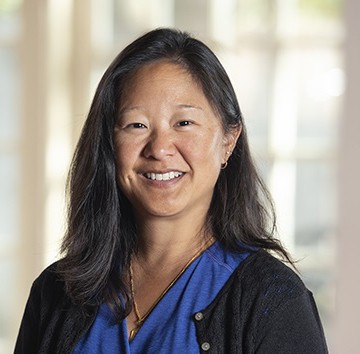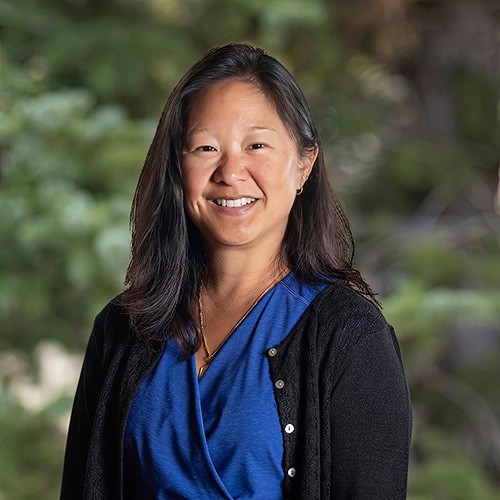
Ph.D., Marine Science, University of California, Santa Barbara, California, 1999
M.S., Mechanical and Environmental Engineering, University of California, Santa Barbara, California, 1997
B.G.E., Geological Engineering, University of Minnesota, Minneapolis, Minnesota, 1995
B.S., Geology, University of Minnesota, Minneapolis, Minnesota, 1995
OSHA 40-Hour HAZWOPER
OSHA 8-Hour HAZWOPER Refresher
Member of The Oceanography Society
Member of American Energy Society
Member of Marine Technology Society
Grace Chang, Ph.D. Senior Science Advisor, Director of Research and Development (831) 576-2881 Santa Barbara, CA gchang@integral-corp.com
Dr. Grace Chang has more than 25 years of experience in the fields of limnology and oceanography. Dr. Chang has managed programs involving field operations, data processing and analysis, and numerical modeling for environmental characterization, observational monitoring, scientific research, and technology development in support of marine renewable energy, hydrodynamics and sediment transport, and oceanographic research programs. She is recognized for her continued advancement of analytical methods in hydrodynamics and particle characterization through optics and acoustics, as well as for environmental research and monitoring. Dr. Chang has more than 40 peer-reviewed publications and frequently is invited to review materials for professional journals and national funding agencies.
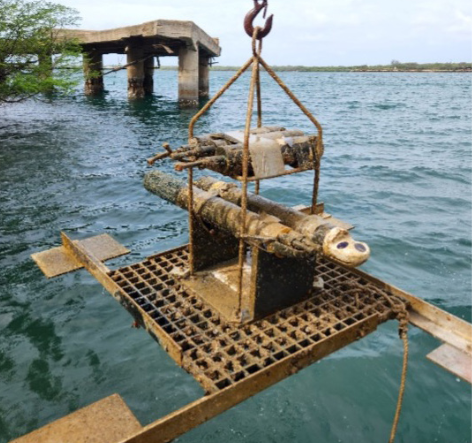
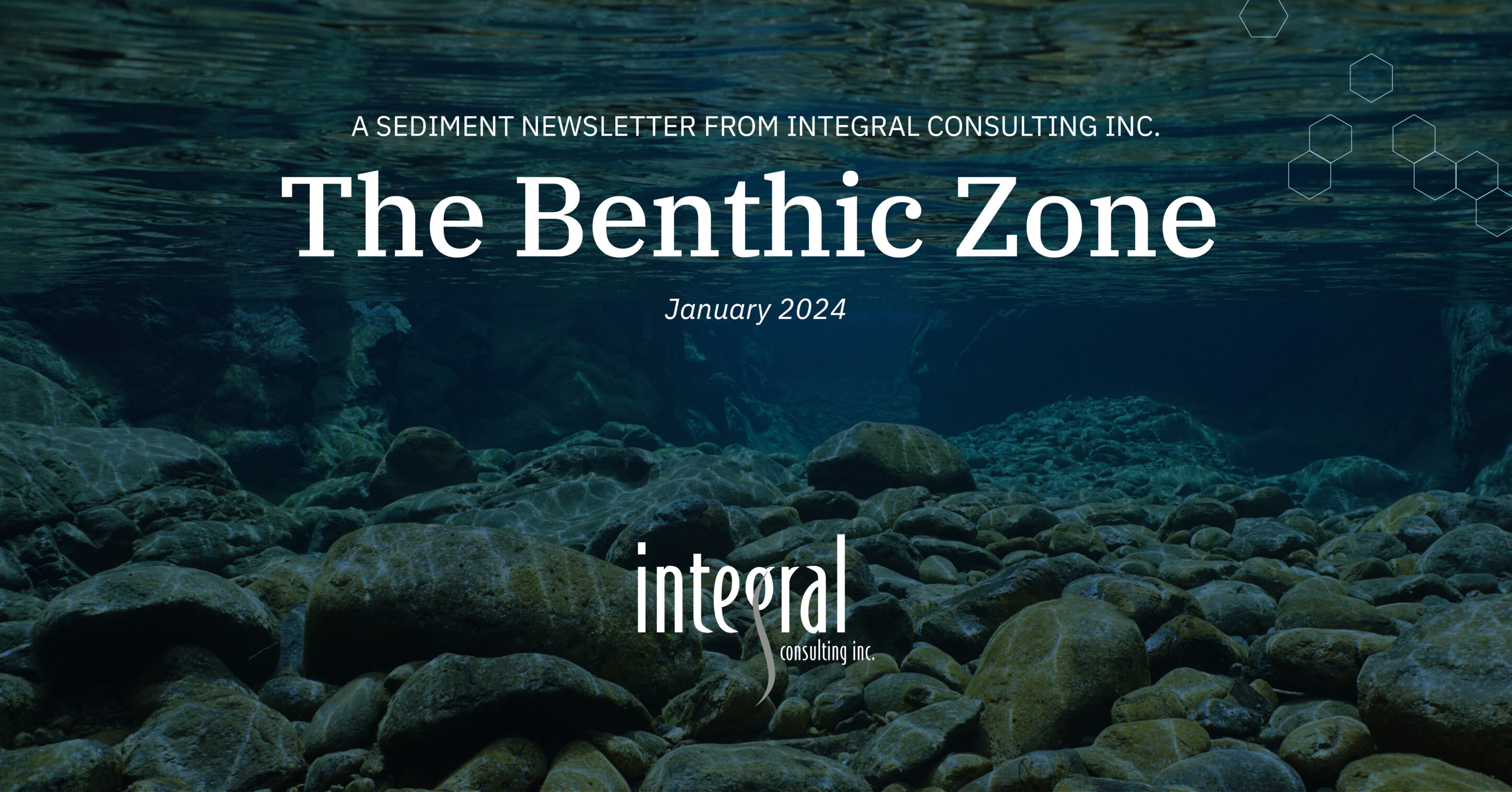
The Benthic Zone (January 2025 Edition): Integral’s Sediment Newsletter
Press Release
January 13 2025SEABIRD: System for Environmental Assessment of Bird/Bat Interactions with Real-Time Detection
Publication
July 01 2024Performance Characteristics of the NoiseSpotter: An Acoustic Monitoring and Localization System
Publication
July 01 2024Wave Energy Converter Arrays: Optimizing Power Production While Minimizing Environmental Effects
Publication
July 01 2024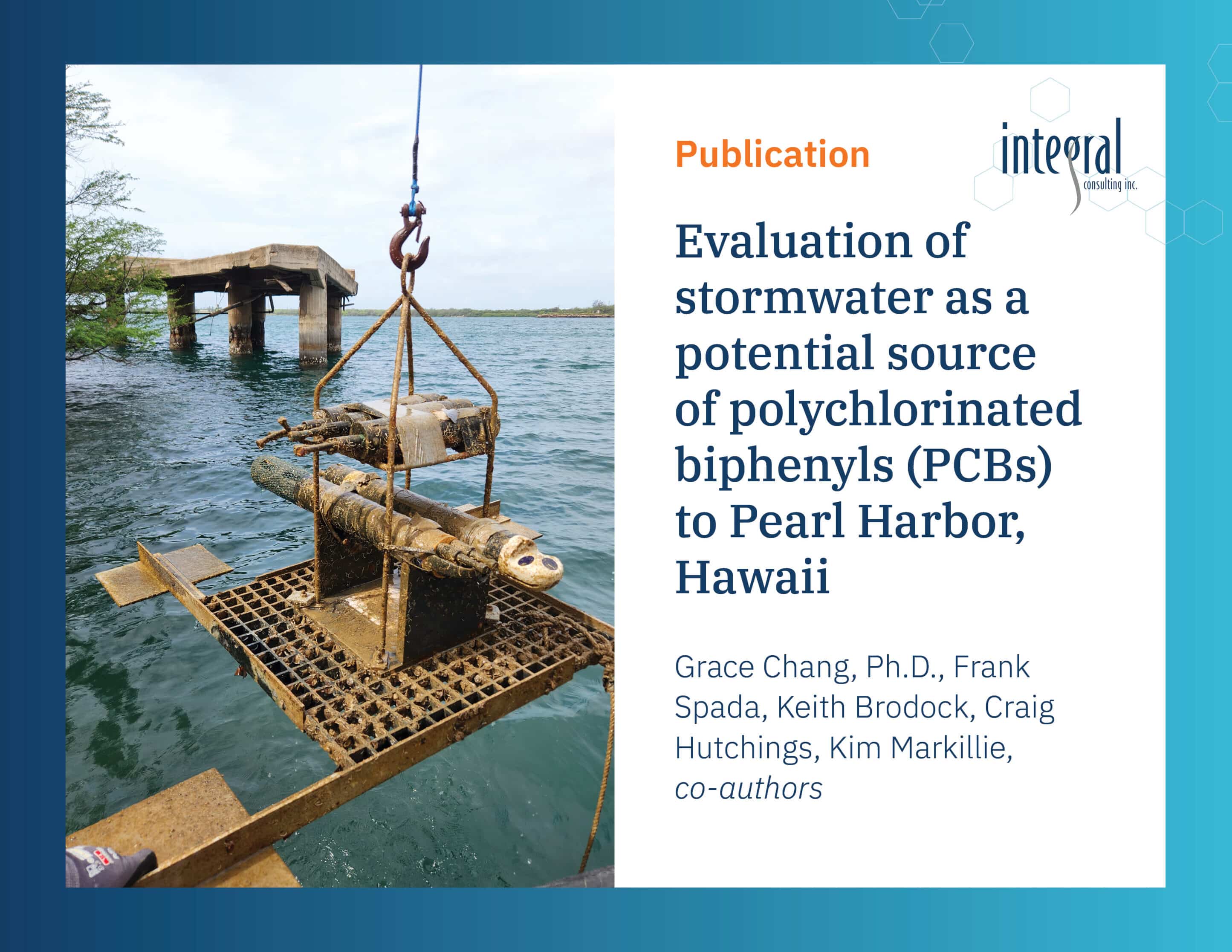
Evaluation of stormwater as a potential source of polychlorinated biphenyls (PCBs) to Pearl Harbor, Hawaii
Publication
February 21 2024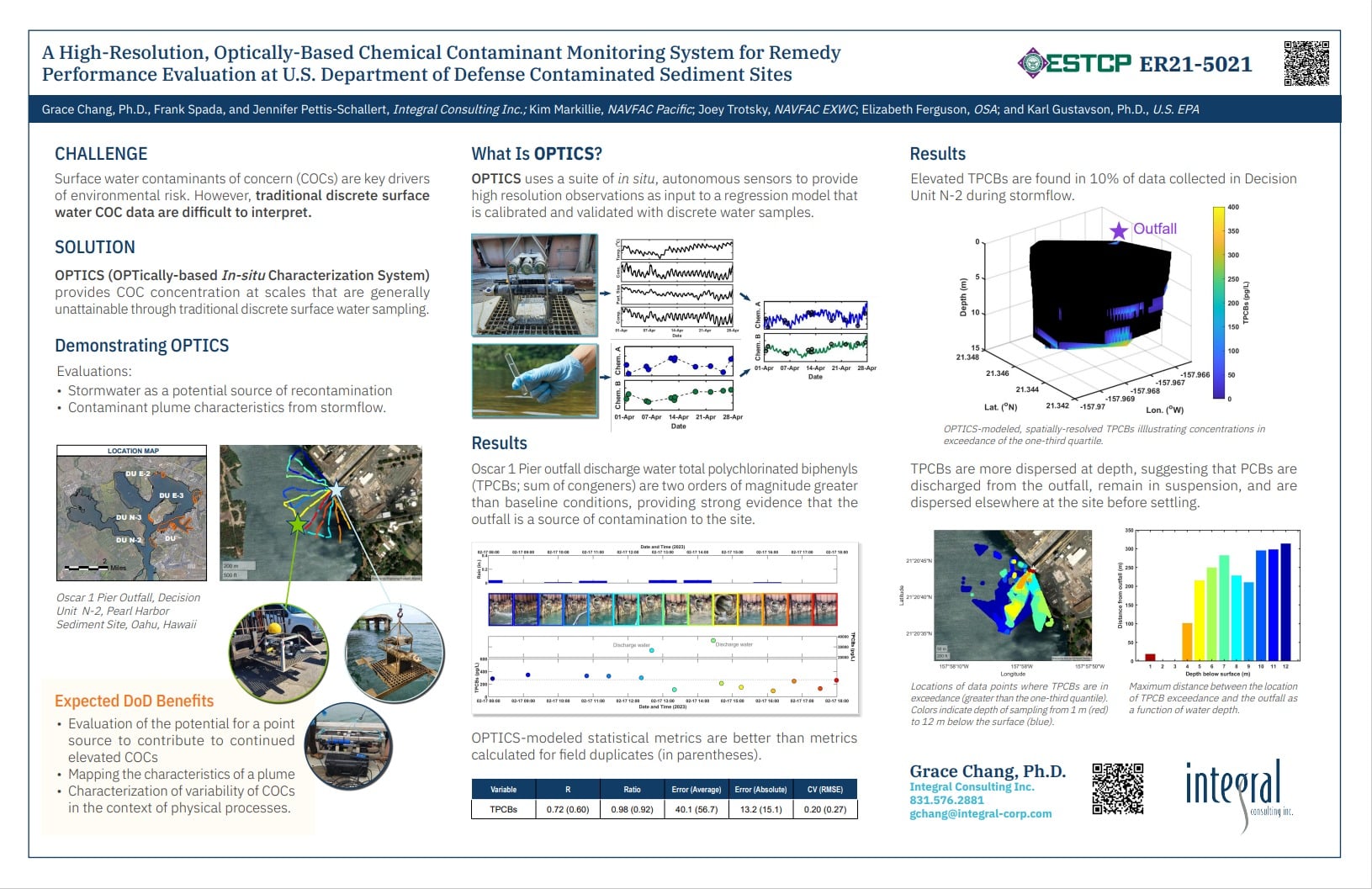
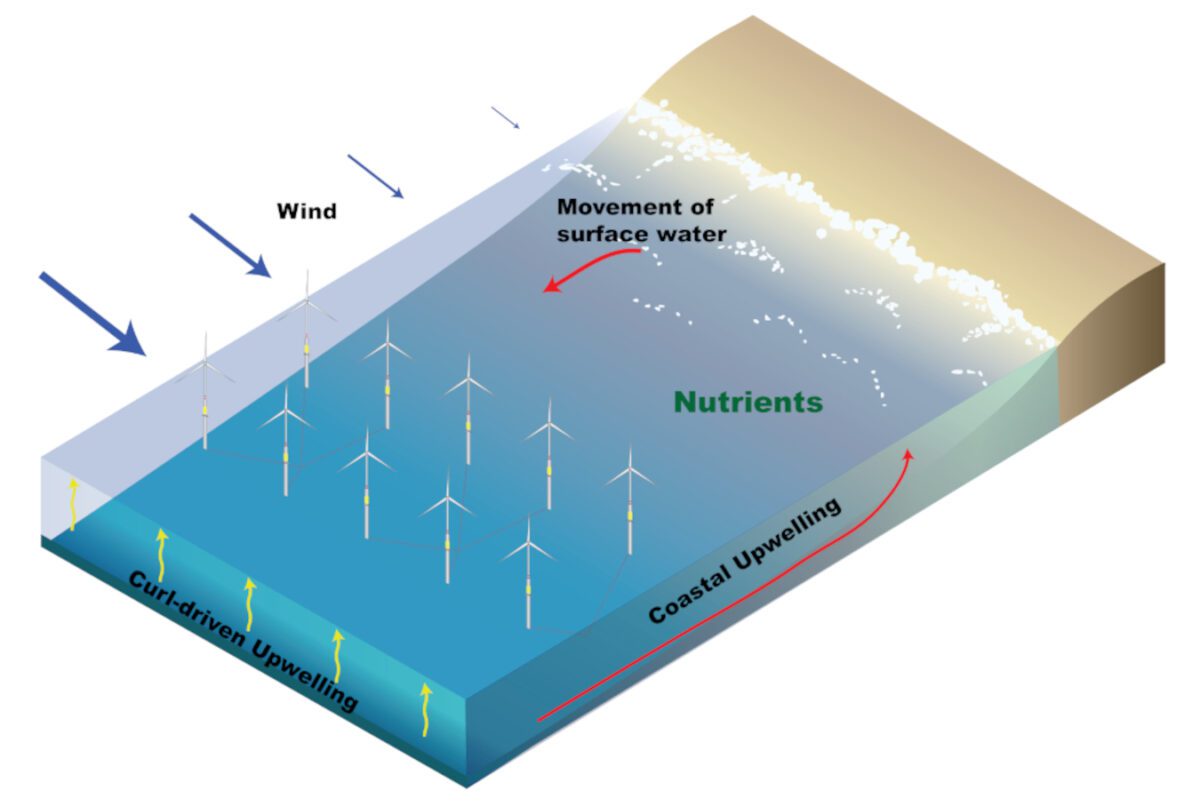
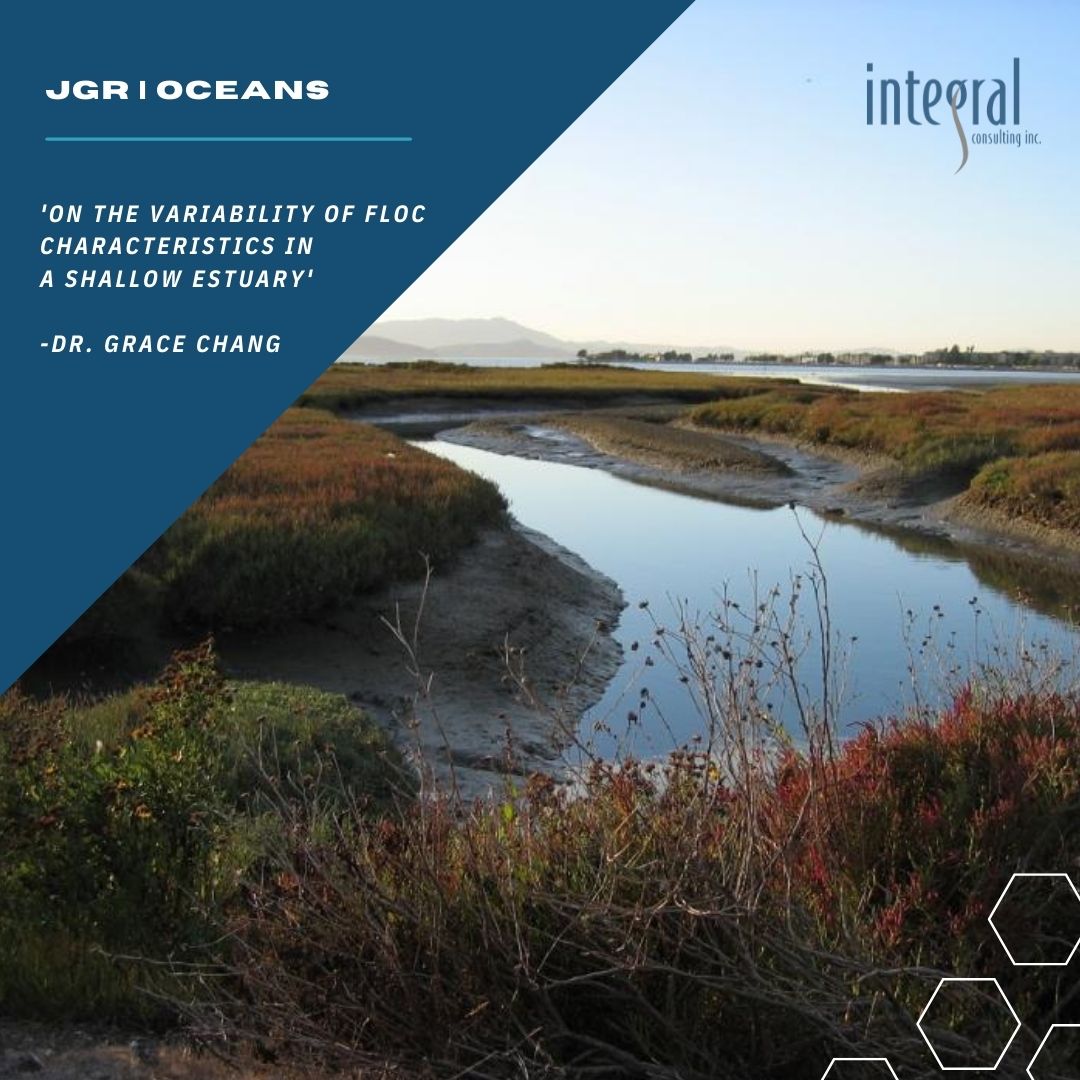
Grace Chang Coauthors Paper on the Variability of Floc Characteristics in a Shallow Estuary
Press Release
June 21 2022
Effect of Floating Offshore Wind Turbines on Atmospheric Circulation in California
Publication
June 01 2022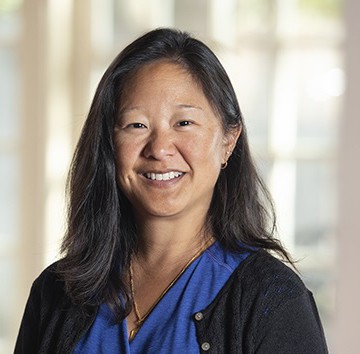
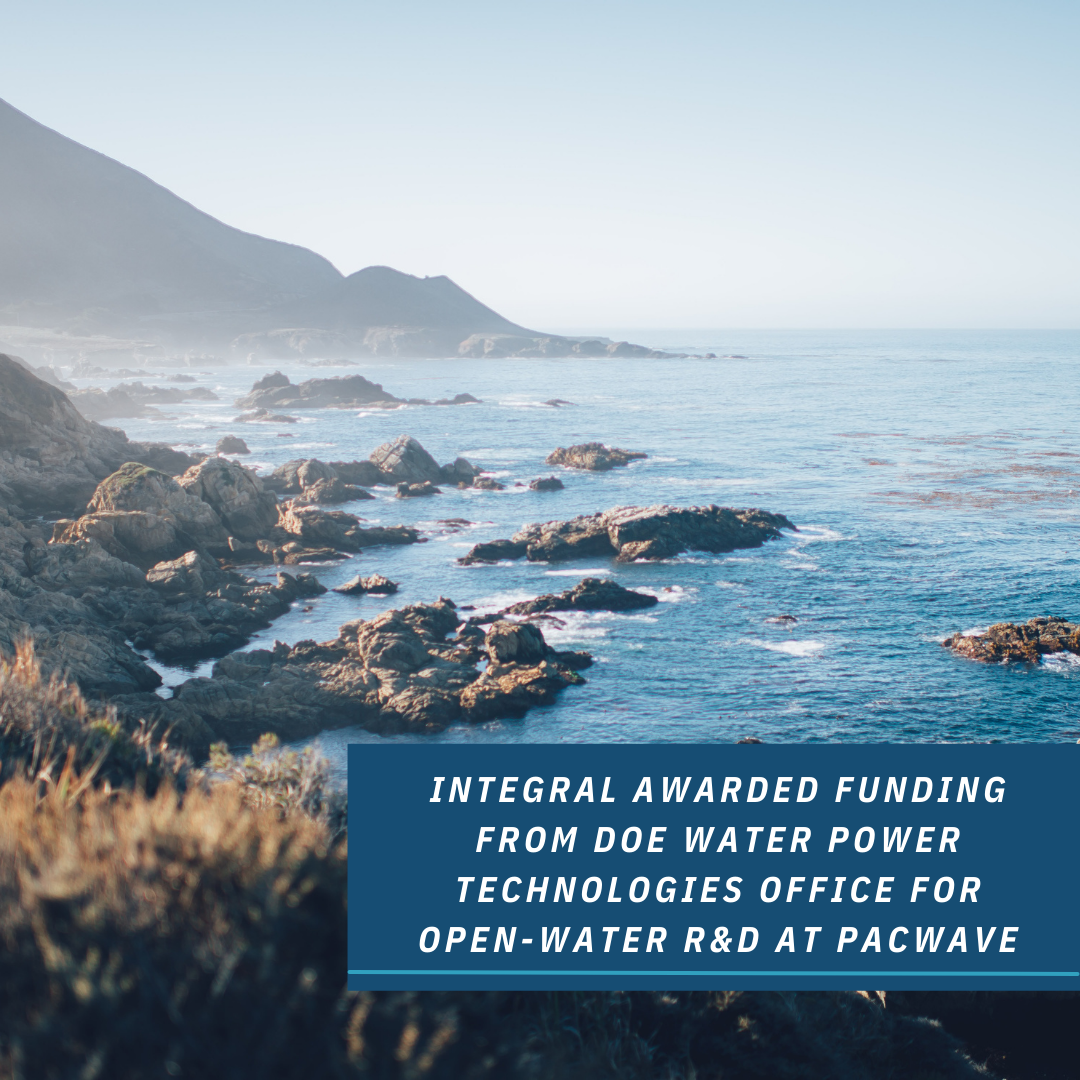
Advancing Renewable Energy: Integral Awarded Funding from DOE for Open-Water R&D at PacWave
Press Release
April 15 2022
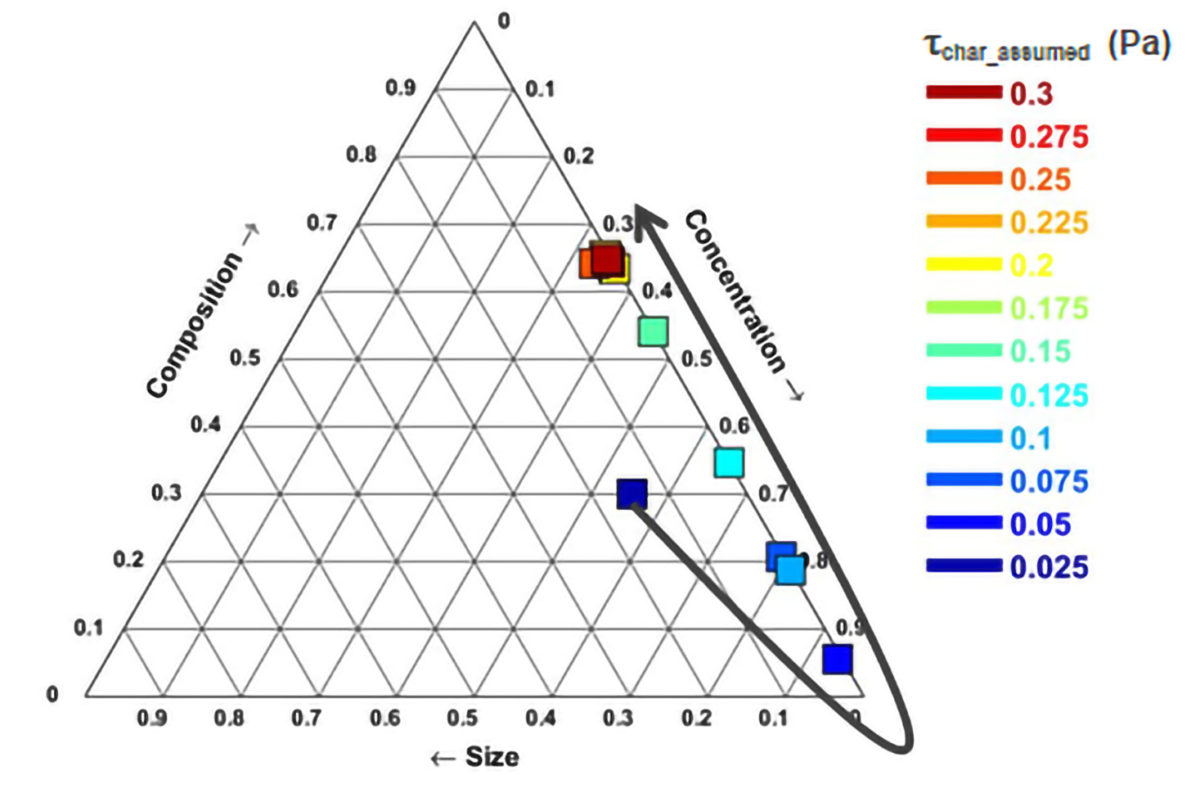
Sediment Transport: Key Research Findings Published in Limnology and Oceanography Letters
Press Release
December 10 2021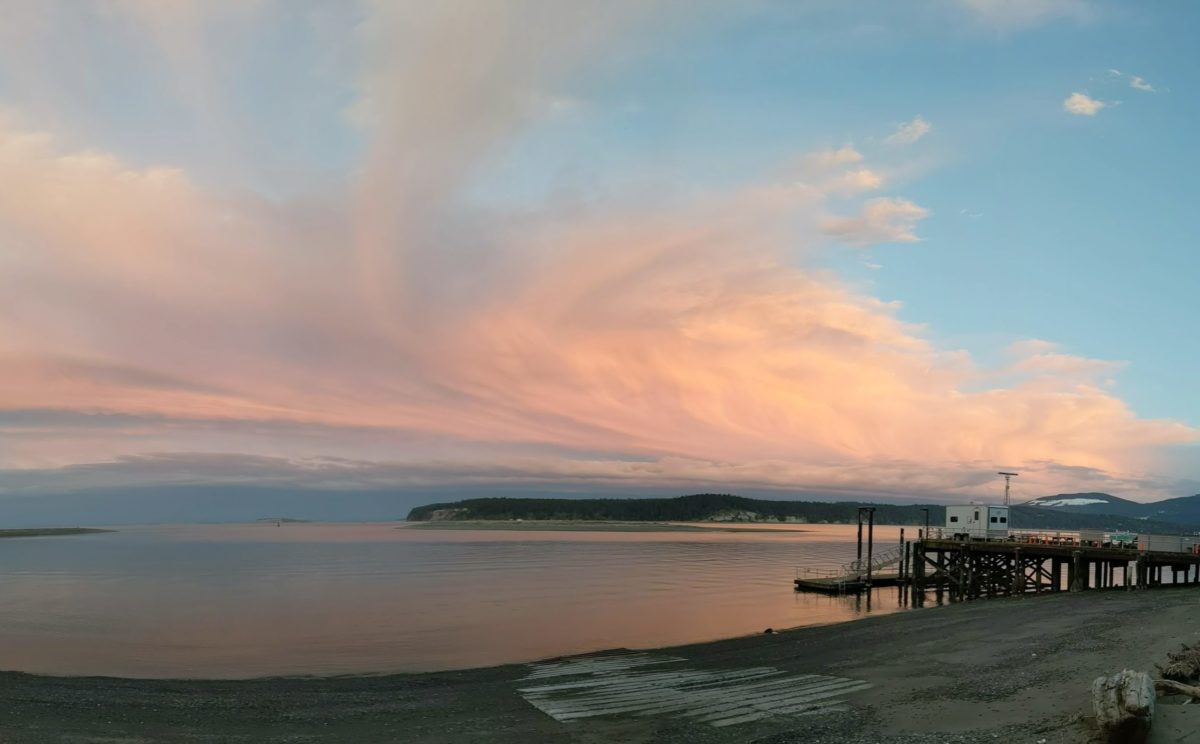
Marine Renewables: Grace Chang, Kaustubha Raghukumar, and Frank Spada Coauthor Article in Frontiers in Marine Science
Press Release
October 19 2021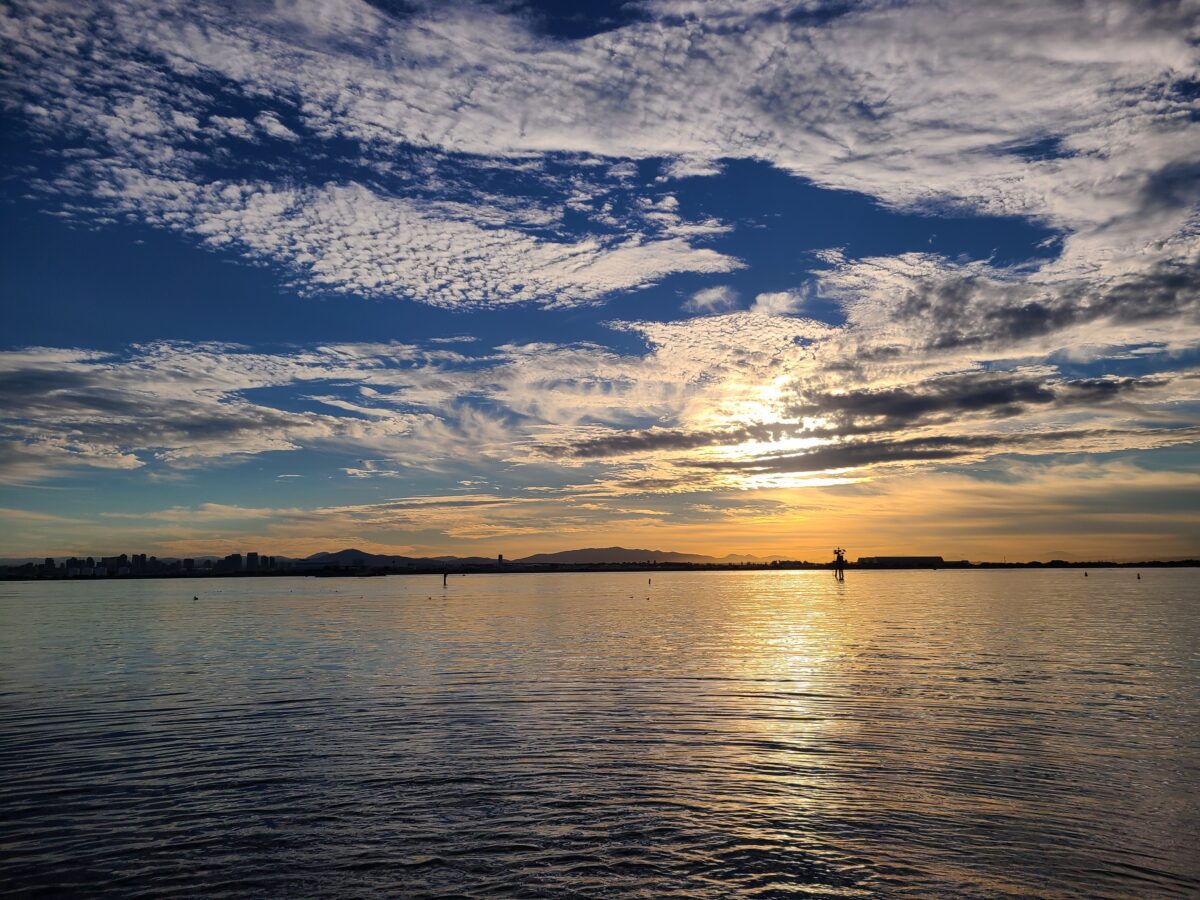


Office of Naval Research—Vandenberg Space Force Base and Los Angeles International Airport (LAX)
Case Study
April 18 2023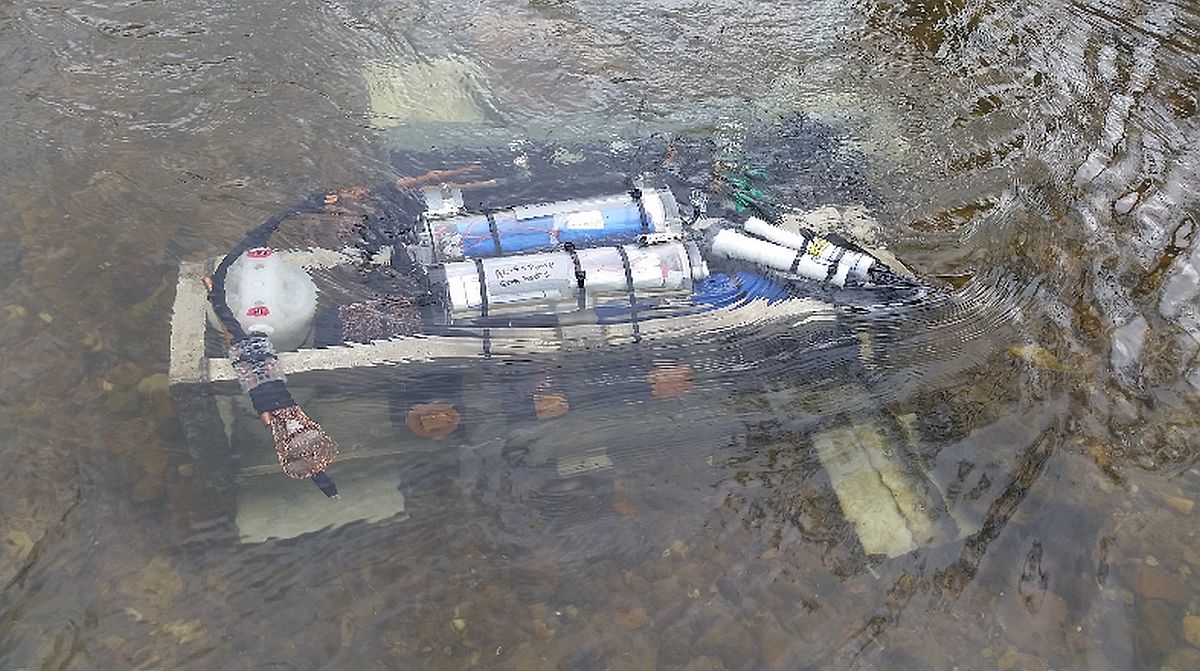
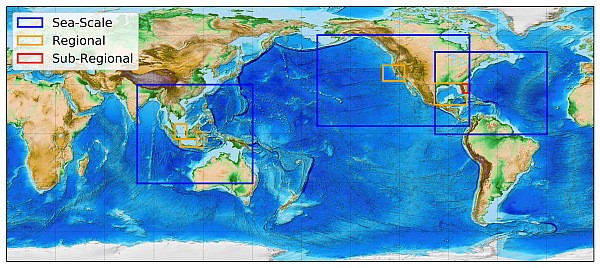
R&D
Renewable Energy
Contaminated Sediments
Environmental Monitoring
Oceanography
For a more comprehensive list, see profile on Research Gate or Google Scholar.
Chang, G., M. Chevitarese, S. Kramer, S. Schneider, S. Matzner, J. Lewis, L. Cheung, and A.M. Macrander. 2024. SEABIRD: System for Environmental Assessment of Bird/Bat Interactions with Real-time Detection. K. Faulk and L. Morse (eds.), Offshore Technology Conference, Houston, TX. doi.org/10.4043/35220-MS.
Chang, G., F. Spada, K. Brodock, C. Hutchings, and K. Markillie. 2024. Evaluation of stormwater as a potential source of polychlorinated biphenyls (PCBs) to Pearl Harbor, Hawaii. Case Studies in Chemical and Environmental Engineering, 100659. doi.org/10.1016/j.cscee.2024.100659.
Chang, G., B.D. Best, and S. Kramer. 2023. Empowering communities to participate in marine energy planning and development. Proceedings of the 15th European Wave and Tidal Energy Conference, vol. 15, September 2023. Bilbao, Spain. doi.org/ 10.36688/ewtec-2023-281.
Raghukumar, K., K. Heal, F. Spada, G. Chang, S. Henkel, T. Chapple, and S. Heppel. 2023. Acoustic measurements during a seismic airgun survey: The case of the Cascadia Subduction Zone. In: The Effects of Noise in Aquatic Life. A.N. Popper et al. (eds.). Springer Nature, Switzerland. https://doi.org/10.1007/978-3-031-10417-6_131-1.
Raghukumar, K., T. Nelson, M. Jacox, C. Chartrand, J. Fiechter, G. Chang, L. Cheung, and J. Roberts. 2023. Cross-shore changes in upwelling from offshore wind farm development in California. Comm. Earth & Environ. 4: 116. https://doi.org/10.1038/s43247-023-00780-y
Raghukumar, K., C. Chartrand, G. Chang, L. Cheung, and J. Roberts. 2022. Effect of floating offshore wind turbines on atmospheric circulation in California. Front. Energy Res. 10:863995. doi: 10.3389/fenrg.2022.863995.
Egan, G., G. Chang, A.J. Manning, S. Monismith, and O. Fringer. 2022. On the variability of floc characteristics in a shallow estuary. J. Geophys. Res. 127, e2021JC018343, doi.org/10.1029/2021JC018343
Chang, G., G. Egan, J. D. McNeil, S. McWilliams, C. Jones, F. Spada, S. Monismith, and O. Fringer. 2021. Seasonal particle responses to near-bed shear stress in a shallow, wave- and current-driven environment. Limnol. Oceanogr. Lett. doi: 10.1002/lol2.10221
Chang, G., G. Harker-Klimeš, K. Raghukumar, B. Polagye, J. Haxel, J. Joslin, F. Spada, and G. Staines. 2021. Clearing a path to commercialization of marine renewable energy technologies through public-private collaboration. Front. Mar. Sci., 8, 669413. doi: 10.3389/fmars.2021.669413
Egan, G., G. Chang, S. McWilliams, G. Revelas, O. Fringer, and S. Monismith. 2020. Cohesive sediment erosion in a combined wave-current boundary layer. J. Geophys. Res. 126(2):e2020JC016655. doi: 10.1029/2020JC016655
Egan, G., A. Manning, G. Chang, O. Fringer, and S. Monismith. 2020. Sediment-induced stratification in an estuarine bottom boundary layer. J. Geophys. Res. 125(8):e2019JC016022. doi: 10.1029/2019JC016022
Egan, G., G. Chang, G. Revelas, S. Monismith, and O. Fringer. 2020. Bottom drag varies seasonally with biological roughness. Geophys. Res. Lett. 47, e2020GL088425. https://doi.org/10.1029/2020GL088425
Jones, C., G. Chang, J. Magalen, and J. Roberts. 2020. Validation of a hydrodynamics and sediment transport modeling framework for the evaluation of offshore wind farms. Marine Technology Society Journal 54(6):62–76.
Whiting, J.M., and G. Chang. 2020. Changes in oceanographic systems associated with marine renewable energy devices. pp. 127–145. In: OES-Environmental 2020 State of the Science Report: Environmental Effects of Marine Renewable Energy Development Around the World. A.E. Copping and L.G. Hemery (eds). Ocean Energy Systems.
Raghukumar, K., G. Chang, F. Spada, and C. Jones. 2020. A vector sensor-based acoustic characterization system for marine renewable energy. J. Mar. Sci. Eng. 8(3):187. doi:10.3390/jmse8030187.
Raghukumar, K., G. Chang, F. Spada, C. Jones, W. Gans, and T. Janssen. 2019. Performance characteristic of Spotter, a newly developed real-time wave measurement buoy. J. Atmos. Ocean. Tech. doi: 10.1175/JTECH-D-18-0151.1
Jones, C., G. Chang, A. Dallman, J. Roberts, K. Raghukumar, and S. McWilliams. 2019. Assessment of wave energy resources and factors affecting conversion. B. Carrier and D. Ball (eds), Offshore Technology Conference, Houston, TX. doi:10.4043/29570-MS
Raghukumar, K., S. McWilliams, G. Chang, J. Roberts, and C. Jones. 2019. Wave energy converter arrays: Optimizing power production while minimizing environmental effects. C. Jones and J. Chitwood (eds), Offshore Technology Conference, Houston, TX. doi:10.4043/29658-MS
Chang, G., and C. Jones. 2018. Towards low-cost, low-impact marine renewable energy. Scientia. https://doi.org/10.26320/SCIENTIA135.
Chang, G., T. Martin, K. Whitehead, C. Jones, and F. Spada. 2018. Optically based quantification of fluxes of mercury, methyl mercury, and polychlorinated biphenyls (PCBs) at Berry’s Creek tidal estuary, New Jersey. Limnol. Oceanogr. doi: 10.1002/lno.11021
Chang, G., T. Martin, F. Spada, B. Sackmann, C. Jones, and K. Whitehead. 2018. OPTically-based In-situ Characterization System (OPTICS) to quantify concentrations and mass fluxes of mercury and methylmercury in South River, Virginia, USA. River Research and Applications 2018:1–10. doi: 10.1002/rra.3361
Chang, G., C.A. Jones, J.D. Roberts, and V. Neary. 2018. A comprehensive evaluation of factors affecting the levelized cost of wave energy conversion projects. Renewable Energy 127:344–354.
Jones, C., G. Chang, K. Raghukumar, S. McWilliams, A. Dallman, and J. Roberts. 2018. Spatial Environmental Assessment Tool (SEAT): A modeling tool to evaluate potential environmental risks associated with wave energy converter deployments. Energies 11, 2036, doi: 10.3390/en11082036.
Chang, G., K. Ruehl, C.A. Jones, J. Roberts, and C. Chartrand. 2016. Numerical modeling of the effects of wave energy converter characteristics on nearshore wave conditions. Renewable Energy 89:636–648.
Chang, G., C. Jones, and M. Twardowski. 2013. Prediction of optical variability in dynamic nearshore environments. Meth. Oceanogr. 7:63–78.
Chang, G., and M.S. Twardowski. 2011. Effects of physical forcing and particle characteristics on underwater imaging performance. J. Geophys. Res. 116:C00H03, doi: 10.1029/2011JC007098
Chang, G., M.S. Twardowski, Y. You, M. Moline, P.-W. Zhai, S. Freeman, M. Slivkoff, F. Nencioli, and G.W. Kattawar. 2010. Platform effects on optical variability and prediction of underwater visibility. Appl. Opt. 49(15):2784–2796.
Nencioli, F., G. Chang, M. Twardowski, and T.D. Dickey. 2010. Optical characterization of an eddy-induced diatom bloom west of the island of Hawaii. Biogeosci. 7:151–162.
Chang, G., and A.L. Whitmire. 2009. Effects of bulk particle characteristics on backscattering and optical closure. Opt. Expr. 17(4):2132–2142.
Blackwell, S.M., M.A. Moline, A. Schaffner, T. Garrison, and G. Chang. 2008. Sub kilometer length scales in coastal waters. Cont. Shelf Res. 28:215–226.
Chang, G., and T.D. Dickey. 2008. Interdisciplinary sampling strategies for detection and characterization of harmful algal blooms. pp. 43–84. In: Real-Time Coastal Observing Systems for Marine Ecosystem Dynamics and Harmful Algal Blooms. M. Babin, C.S. Roesler, and J.J. Cullen (eds). UNESCO Publications, Paris.
Chang, G., A.H. Barnard, and J.R.V. Zaneveld. 2007. Optical closure in a complex coastal environment: Particle effects. Appl. Opt. 46(31):7679–7692.
Chang, G.C., A.H. Barnard, S. McLean, P.J. Egli, C. Moore, J.R.V. Zaneveld, T.D. Dickey, and A. Hanson. 2006. In situ optical variability and relationships in the Santa Barbara Channel: Implications for remote sensing. Appl. Opt. 45(15):3593–3604.
Chang, G.C., Dickey, T., and M. Lewis. 2006. Toward a global ocean system for measurements of optical properties using remote sensing and in situ observations. pp. 285 326. In: Remote Sensing of the Marine Environment: Manual of Remote Sensing. J.F.R. Gower (ed). Vol. 6, Ch. 9. ASPRS Publications, Bethesda, MD.
Dickey, T., M. Lewis, and G. Chang. 2006. Bio-optical oceanography: Recent advances and future directions using global remote sensing and in situ observations. Rev. Geophys. 44:RG1001, doi: 10.1029/2003RG000148.
Chang, G.C., and T.D. Dickey. 2004. Coastal ocean optical influences on solar transmission and radiant heating rate. J. Geophys. Res. 109:C01020, doi: 10.1029/2003JC001821. (Selected AGU Journal Highlight Article, JGR-Oceans)
Chang, G.C., K. Mahoney, A. Briggs-Whitmire, D. Kohler, C. Mobley, M. Moline, M. Lewis, E. Boss, M. Kim, W. Philpot, and T. Dickey. 2004. The new age of hyperspectral oceanography. Oceanogr. Mag. 17 (2):22–29.
Coble, P., C. Hu, R. Gould, G. Chang, and M. Wood. 2004. Colored dissolved organic matter in the coastal ocean: An optical tool for coastal zone environmental assessment and management. Oceanogr. Mag. 17 (2):50–59.
Manov, D.V., G.C. Chang, and T.D. Dickey. 2004. Methods for reducing biofouling of moored optical sensors. J. Atmos. Ocean. Tech. 21(6):958–968.
Chang, G.C., E. Boss, C. Mobley, T.D. Dickey, and W.S. Pegau. 2003. Toward closure of upwelling radiance in coastal waters. Appl. Opt. 42:1574–1582.
Chang, G.C., T.D. Dickey, O.M. Schofield, A.D. Weidemann, E. Boss, W.S. Pegau, M.A. Moline, and S.M. Glenn. 2002. Nearshore physical forcing of bio-optical properties in the New York Bight. J. Geophys. Res. 107:3133, doi:10.1029/2001JC001018.
Zheng, X., T. Dickey, and G. Chang. 2002. Variability of the downwelling diffuse attenuation coefficient with consideration of inelastic scattering. Appl. Opt. 41:6477–6488.
Boss, E., W.S. Pegau, W.D. Gardner, J.R.V. Zaneveld, A.H. Barnard, G.C. Chang, and T.D. Dickey. 2001. Particulate attenuation at the bottom boundary layer of a continental shelf. J. Geophys. Res. 106:9509–9516.
Chang, G.C., and T.D. Dickey. 2001. Optical and physical variability on time scales from minutes to the seasonal cycle on the New England shelf: July 1996 – June 1997. J. Geophys. Res. 106:9435–9453.
Chang, G.C., T.D. Dickey, and A.J. Williams III. 2001. Sediment resuspension over a continental shelf during hurricanes Edouard and Hortense. J. Geophys. Res. 106:9517–9531.
Souza, A.J., T.D. Dickey, and G.C. Chang. 2001. Modeling water column structure and suspended particulate matter in the middle Atlantic continental shelf during the passage of hurricanes Edouard and Hortense. J. Marine Res. 59:1021–1045.
Chang, G.C., and T.D. Dickey. 1999. Partitioning in situ total spectral absorption by use of moored spectral absorption-attenuation meters. App. Opt. 38:3876–3887.
Dickey, T.D., G.C. Chang, Y.C. Agrawal, A.J. Williams III, and P.S. Hill. 1998. Sediment resuspension in the wakes of hurricanes Edouard and Hortense. Geophys. Res. Lett. 25:3533–3536.
Chang, G., F. Spada, K. Brodock, C. Hutchings, and K. Markillie. 2025. Riders on the stormwater: Characterizing polychlorinated biphenyls (PCBs) discharged from Oscar 1 Pier Outfall, Pearl Harbor, Hawaii. Oral presentation at the Twelfth International Conference on the Remediation and Management of Contaminated Sediments, Tampa, FL. January 27–30.
Chang, G., B. Best, and S. Kramer. 2024. CStories: Digital tools to facilitate community participation in offshore wind planning and development. eLightning presentation at the 2024 Ocean Sciences Meeting. Co-sponsored by the American Geophysical Union, the Association for the Sciences of Limnology and Oceanography, and The Oceanography Society. February 18–23.
Chang, G., T. Martin, C. Jones, and P. Brussock. 2023. Marsh-water exchange of methylmercury at Berry’s Creek Study Area, New Jersey. Oral presentation at the Eleventh International Conference on the Remediation and Management of Contaminated Sediments, Austin, TX. January 9–12.
Chang, G., T. Martin, C. Jones, and F. Spada. 2022. High-resolution, optically-based quantification and assessments of chemical contaminant concentration and mass transport. Oral presentation at the SERDP-ESTCP-OE Innovation Symposium. November 29–December 2.
Chang, G., G. Egan, J. McNeil, S. McWilliams, C. Jones, F. Spada, S. Monismith, and O. Fringer. 2022. Particle responses to near-bed shear stress in a shallow, wave- and current-driven environment. Platform presentation at the Ocean Sciences Meeting. Co-sponsored by the American Geophysical Union, the Association for the Sciences of Limnology and Oceanography, and The Oceanography Society, Virtual. February 24–March 4.
Jones, C., S. McWilliams, K. Raghukumar, G. Chang, and J. Roberts. 2020. Optimization of wave energy converter array deployments while minimizing potential environmental risks. Oral presentation at the 2020 Ocean Sciences Meeting. Co-sponsored by the American Geophysical Union, the Association for the Sciences of Limnology and Oceanography, and The Oceanography Society, San Diego, CA. February 16–21.
Invited presentation, “Potential Effects of Offshore Wind Farms on California Upwelling,” California Coastal Commission Informational Briefing on Offshore Wind. May 11, 2023.
Short course titled “Evaluating Sediment Transport: Best Practices, Tools, Techniques, and Application to Site Management.” Eleventh International Conference on Remediation of Contaminated Sediments. January 9–12, 2023.
Town Hall Panelist, “Supporting Marine Renewable Energy Development through Multi-Scale Testing,” 2020 Ocean Science Meeting. February 19, 2020.
Short course titled “Evaluating Sediment Transport: Best Practices, Tools, Techniques, and Application to Site Management.” Tenth International Conference on Remediation of Contaminated Sediments. January 2019.
Seminar titled: “High-resolution biogeochemical monitoring using optical technology.” Southern California Coastal Water Resources Project. January 2016.
Invited participant. Consortium for Ocean Leadership, NASA data QA/QC workshop. June 2012.
Lecture titled “Ocean Optics: Seeing Clearly in Muddy Waters.” United States Geological Survey Western Coastal and Marine Geology seminar series. May 2010.
Lecture titled “Sediment Transport Investigations at Contaminated Sediment Sites.” Southern California Coastal Water Research Project seminar series. April 2010.
Lecture titled “The Prediction of Visibility in Dynamic Surf Zone Environments.” University of Hawaii Ocean and Resources Engineering seminar series. March 2010.
Lecture titled “Ocean Optics: Seeing the Light through Science and Technology.” University of California at Los Angeles Physical Oceanography departmental seminar. May 2008.
Lectures titled “Inherent Optical Properties—Data Visualization,” “Apparent Optical Properties—Data Post-Processing,” and “Observational Systems.” HABWatch workshop: Real-Time Coastal Observing Systems for Ecosystem Dynamics and Harmful Algal Blooms. June 2003.
Chang, G., C.A. Jones, and T. Martin. 2021. Optical-based Monitoring and Characterization of Natural Water (United States Patent No. 11,079,368).
Raghukumar, K., G. Chang, F. Spada, and C.A. Jones. 2021. Vector Sensor-Based Acoustic Monitoring System (United States Patent No. 11,156,734).
NoiseSpotter® U.S. Trademark No. 6,442,313.
Marine Energy Technology Symposium (METS) Board Member. 2018 to present.
Associate Editor for Oceanography. 2018 to present.
The Oceanography Society Co‑chair (2020) and Chair (2022) for the Ocean Sciences Meeting planning committee. 2018 to 2022.
Organizing committee member and session moderator. Ocean Waves Workshop. December 2017.
Planning committee member. Ocean Optics Conference. 2010 to 2016.
Peer reviewer for myriad oceanographic journals and funding agencies.

